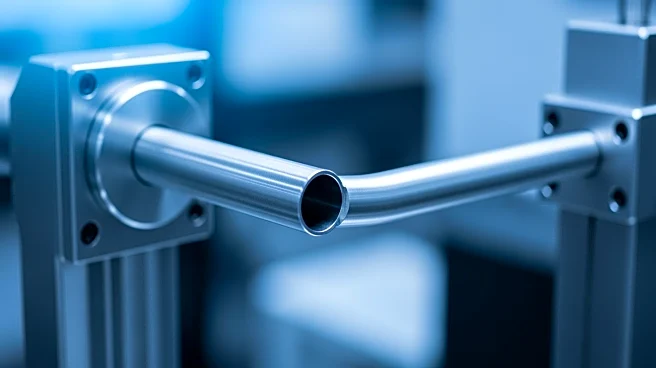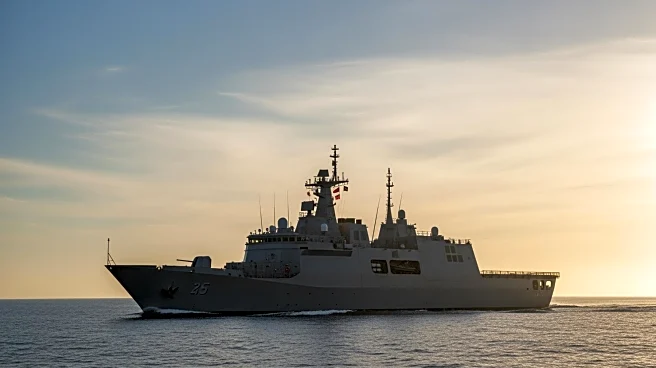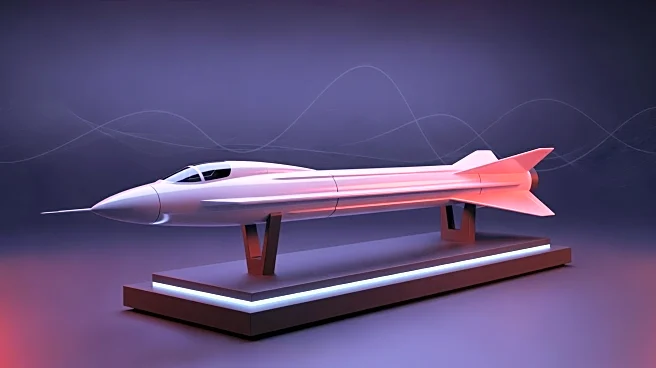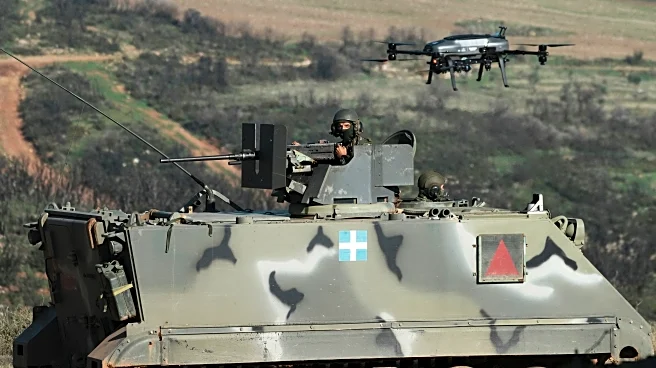What's Happening?
Thales has delivered a surface naval drone to the French Navy as part of the Franco-British Maritime Mine Counter Measures (MMCM) programme. The Unmanned Surface Vessel (USV) is equipped with a TSAM towed
sonar and the SAMDIS multi-view sonar, marking a production milestone in the MMCM programme. Managed by OCCAR with support from the French Direction générale de l’armement (DGA) and the UK Ministry of Defence (MoD), this system aims to enhance operational performance in mine countermeasures by reducing personnel exposure to hazardous environments. The system boasts a sea mine detection rate exceeding 99%, ensuring naval forces maintain operational superiority against complex threats. Thales has integrated feedback from over 3,000 hours of sea trials conducted by the French and Royal Navy since 2021 to adapt the systems to operational needs.
Why It's Important?
The delivery of this advanced naval drone system represents a significant advancement in maritime defense operations. By reducing personnel exposure to mine-related risks, the system enhances mission efficiency and operational superiority. The integration of high-performance sensors and innovative AI algorithms reduces operators' cognitive load, making it a world-first achievement. This development is crucial for maintaining naval operational superiority against increasingly complex threats, ensuring the safety and effectiveness of naval operations.
What's Next?
Thales continues to work with the Couach shipyard to upgrade initial surface drone prototypes, integrating end-user feedback to fully meet operational needs. The MMCM programme is expected to further develop and deploy additional systems, enhancing the capabilities of naval forces in mine countermeasures. The ongoing collaboration between Thales and naval forces will likely lead to further innovations in autonomous maritime defense systems.
Beyond the Headlines
The integration of AI and high-performance sensors in naval drones represents a broader trend towards automation and advanced technology in defense systems. This shift not only improves operational efficiency but also sets a precedent for future developments in unmanned systems across various military applications.












